What is the best gas garage heater? First, the unit should be powerful enough to generate enough heat for your garage. A Gas heater's power rating is expressed in BTUs. In fact, much depends on the area you need to heat up, how well your garage is insulated, and the climate in your region. Broadly speaking, if you have the average-sized two-car garage, opt for a heater providing at least 45,000 BTU. For a three-car garage, a 60,000-BTU model will be more appropriate. To calculate the heating area for your garage, multiply the square feet of the space by 10W and then multiply the results by 3.41. The second essential thing to consider is energy efficiency or how much energy it will consume. The heater's efficiency rating determines how much heat the unit actually puts out. Thirdly, make sure that your gas heater features sufficient fuel tank capacity, which determines how long your fuel will last. We believe that the Modine Hot Dawg, 75000 BTU Gas Fired Unit Heater meets these criteria best.
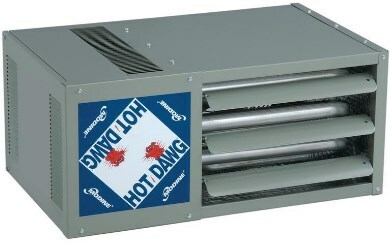
Why have we chosen it? Founded more than 100 years ago, Modine is a trusted American brand of heaters and ventilators. In 1941, the company built the world’s first vehicular wind tunnel located in Wisconsin. All Modine products are made in the USA and meet the highest manufacturing standards. This convection-type heater is a great choice for both residential and industrial areas. It is a surface-mounted, natural gas garage ceiling heater that can be easily installed in areas where space is limited. This model attaches to piping from either the left or right side. The unit produces 75,000 BTU of heat, which makes it a great choice for garages of all sizes and even those with poor insulation. That said, it has a compact and lightweight design.
Gas garage heaters are safe, clean, stationary or portable. Natural gas heaters may be convection (air circulated around heating tools) or infrared (uses electromagnetic radiation) and typically connected to a gas line. Propane heaters may connect to a propane line or portable tank.
Table of Content
- 1 What to Look for When Choosing a Gas Garage Heater
- 2 How to Calculate BTU for Your Garage?
- 3 What Are the Advantages of Gas Garage Heaters?
- 4 Installing a Gas Garage Heater: Things You Should Know
- 5 Best Gas Garage Heater Reviews
- 6 10 Best Gas Garage Heaters Comparison Table
What to Look for When Choosing a Gas Garage Heater
Maximum Power
Natural gas and propane garage heaters are more powerful, and generate more heat than electric garage heaters. Their power rating is expressed in BTUs. The more BTUs the gas heater has, the more power and heat output it has. Fan-forced natural gas heaters are powerful, self-contained heat producers. Sealed combustion dual-vent heaters are the most efficient.
Heating Area
The maximum square foot area a gas garage heater can warm is based on a garage with an 8-foot ceiling. A relatively easy way to estimate the size (in BTUs) of gas garage heater you need to sufficiently heat your space is to use the “10 Watts per Square Foot Rule” to calculate the wattage. Then multiply the wattage by 3.41 to find the size (in BTUs) of the gas heater that will adequately heat your space.
For example:
A 22 'x 24' garage = 528 SF
528 SF x 10 = 5230 Watts
5230W x 3.41 = 18.005 BTU
Keep in mind that the power needed to heat a garage in a typically colder part of the country (i.e.: Minnesota) must be greater than what is needed to heat a garage where climate changes are more mild (i.e.: Florida).
Power (kcal / h)
The higher the BTUs, the more powerful the heater is and larger space it can heat. The power rating is the heater's operation under the ideal conditions. Buy more power (BTUs) than what you readily need to account for drafts or lack of building insulation.
A more precise calculation for determining the minimum power your gas garage heater needs to generate to adequately heat your space uses the volume of your garage (i.e.: 22 ’x 24’ x 8 ’), the difference between the external temperature and the temperature you wish the garage to be and a dispersion coefficient.
Volume x (External temp - Desired Internal temp (in deg. C)) x Dispersion Coefficient = kcal / h
Or ...
Volume x Insulation x Temperature Rise divided by 1.6 = BTUs
Fuel Consumption
Natural gas garage heater efficiency is denoted by its fuel input. A 150,000 BTUH heater uses 150,000 BTU's of fuel / hour.
The heater's efficiency rating determines how much heat the unit actually puts out. For example, if your gas garage heater is labeled 80% efficient, you should expect it to output 80,000 BTU’s of heat per hour. (Be aware that the nominal size is not the actual heat generated.)
Fuel Tank Capacity
Propane gas garage heaters may be connected to a portable tank or directly to a LP system. A residential propane garage heater typically has a capacity of 30,000 BTUH - 45,000 BTUH. To determine how long your fuel will last, divide the LP tank BTUs by your garage heater’s BTUH.
For example:
A 20lb., 4.7 gal. propane tank can hold approximately 430,000 BTUs of LP
430,000 / 45,000 = 9.5 hours.
This does not consider how well-insulated your garage is, how high you set your heater’s thermostat or outdoor temperatures and drafts.
How to Calculate BTU for Your Garage?
The bigger area you have to heat, and the less insulated it is, the more BTU-power you will need your gas garage heater to have.
Calculate the approximate BTU requirement based on the square foot area you want to heat.
- Insulated garage: (Square footage / 200) x 6,000 = BTU output required
Account for heat loss due to uninsulated walls and doors and doors that do not fit tightly.
- Uninsulated Garage: (Square footage / 200) x 9,000 = BTU output required
What Are the Advantages of Gas Garage Heaters?
Comparisons
Natural gas garage heaters are more powerful, but comparably safe, clean and cost effective, to electric garage heaters. Both have temperature controls, produce sufficient warmth and may be mounted in places where space is limited. While natural gas and electric heaters require a source connection (gas or power), propane heaters do not need to be. They may be attached to portable propane tanks. Propane heaters are lightweight and portable and many models only require standard power to run their fans or ignitions.
Zoning and geothermal garage and cold space heater options are not as cost effective heating solutions as electric, natural gas or propane, but they can potentially be converted to heat your entire home.
Benefits
Gas garage heaters continue full operation and heat output during storms and power outages. They are relatively inexpensive to run. Depending on fuel costs, a natural gas heater costs approximately $ 18 / million BTUs to run. A propane heater costs approximately $ 30 / million BTUs to run. Comparatively, an electrical heater costs approximately $ 35 / million BTUs to run. Propane heaters produce more BTUs than natural gas units. Their blower fans allow them to effectively heat larger areas too.
Natural gas heaters produce little CO2 and few particulates and oxides. Natural gas heaters are 90% efficient (converting fuel into useful energy) compared to conventional electric garage heaters that only convert 30% of their energy source into electricity.
Installing a Gas Garage Heater: Things You Should Know
- Connecting to a Gas Line. Your natural gas garage heater must be directly connected to your home's natural gas line. A vent must also be installed to ensure fumes generated by the unit are safely exhausted through the garage wall or roof to the outside.
- Heater placement is a main consideration. To ensure maximum efficiency, place the unit so the heat is directed to where there is the most heat loss (typically at the front of the garage).
- Leave enough clearance for gas pipe, vent and electrical connections when installing the mounting brackets. The heater’s specifications will tell you if these connections are on the right or left side of the unit. Some models provide for either-side connection. Also refer to the unit's installation instructions to ensure you use the correct gas pipe required to receive adequate gas pressure. Seal connections with pipe compound and test for leaks prior to heater operation and use.
- Hardwire or plug in the electrical after the gas line is connected and tested. You may also run sheathed cable from a thermostat to the heater unit for temperature control. Install the vent system after the electrical connection is made.
- Safety Considerations. Whether you choose to hang your gas garage heater from the ceiling or mount it on the wall, it should be positioned approximately 3 in. below the ceiling for safety. You should also keep objects at least 3 feet away from the heater.
Best Gas Garage Heater Reviews
Below, you will find a review of the best gas garage heaters at a price ranging from $ 200 to $ 2200. Depending on your needs, you can choose a model that effectively heats small areas (10,000 BTU) medium-sized garages (20,000 BTU) or large spaces (30,000 BTU and over). There are also high-performance units providing 100,000 BTU, 200,000 BTU, and even 400,000 BTU per hour of heat.
1. Modine Hot Dawg Natural Gas Garage Ceiling Heater (30,000 to 400,000 BTU) | Best High-Capacity

These convection type garage heaters are ideal for residential, commercial and industrial installations.
Modine hot dawg 30,000 BTU, 45,000 BTU and 75,000 BTU surface-mounted, natural gas garage ceiling heaters are low-profile, which allows them to be easily installed in areas where space is limited. These models attach to piping from either the left or right side.
The permanently-lubricated, trouble-free Modine Hot Dawg 100,000 BTU natural gas garage heater is a quiet, easily installed ceiling-mounted unit. Model sizes 100-125 are suspended by a threaded rod (no brackets required).
The 115V. Modine PDP 150,000 BTU vertical, surface-mounted, natural gas ceiling heater delivers 120,000 BTU output. It features an interrupted-spark ignition, vertical and horizontal power exhaust vents and safety pressure switch w / auto shutoff.
The 115V. Modine PDP 200,000 BTU vertical, surface-mounted, propane gas ceiling heater delivers 160,000 BTU output. It is easily installed and features vertical and horizontal power exhaust vents and safety pressure switch w / auto shutoff.
The 115V. Modine PDP 250,000 BTU vertical, surface-mounted, natural gas ceiling heater delivers 200,000 BTU output. It features vertical and horizontal power exhaust vents and safety pressure switch w / auto shutoff.
Modine PDP 300,000 BTU, 350,000 BTU and 400,000 BTU vertical, surface-mounted, natural gas ceiling heater units each feature an interrupted-spark ignition, vertical and horizontal power exhaust vents and safety pressure switch w / auto shutoff.
All Modine gas garage heater equipment shall be selected and installed by a qualified professional in accordance with federal, state and local codes to avoid any risk of invalidating the warranty.
Pros:
| Cons:
|
Modine: Check the current price
2. Mr. Heater 30,000 Vent Free Blue Flame Natural Gas Garage Space Heater | Best Noiseless
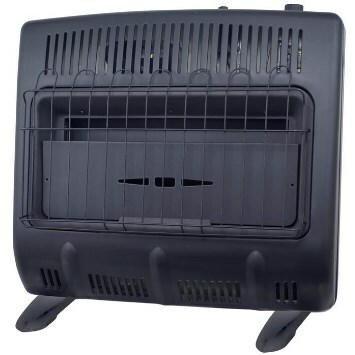
The 30,000 BTU, steel-housed Mr. Heater natural gas garage heater is an indoor / outdoor, ventless unit that heats 750 - 1,000 SF. Its blue flame burner ensures even convection heat. A battery-powered electronic ignition starts the integrated blower that circulates air warmed by multiple radiantly-heated burner tiles.
This model also features an auto-temp control thermostat and low-oxygen ODS (Oxygen Depletion Sensor) shut-off. The Mr. Heater 30,000 BTU natural gas garage heater may be permanently mounted or affixed to the floor (mounting brackets and fasteners are included).
Pros:
| Cons:
|
Mr. Heater: Check the current price
3. Williams - Monterey Top-Vent Wall Heater 25,000 BTUH, 70% AFUE, Natural Gas | Best Efficient
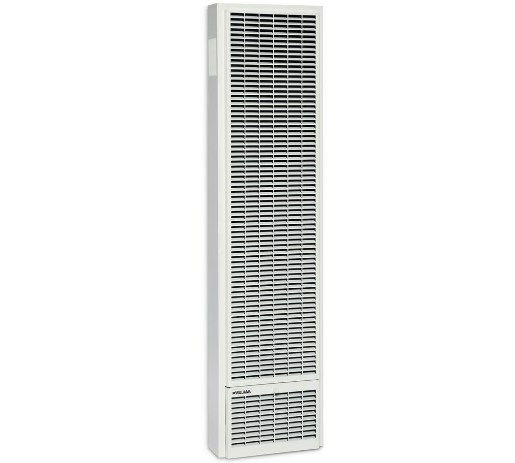
The highly-efficient, 25,000 BTUH Williams - Monterey natural gas garage wall heater is an indoor, top-vent convection unit that heats 600 - 900 SF. Its thin, 1 in. profile makes it easy to install between wall studs. High-gauge steel construction reduces acoustic and operation noise.
This model offers high efficient 70% AFUE with 72% thermal efficiency making it ideal for basements as well as garages, four-season porches and cabins. No electricity is required.
This Williams - Monterey natural gas wall heater can be converted to run on LP (liquid propane). A conversion kit is also available to convert it to high altitude operation.
Pros:
| Cons:
|
Williams: Check the current price
4. Dyna-Glo 30,000 BTU Natural Gas Infrared Natural Gas Wall Heater | Best for a Small Garage
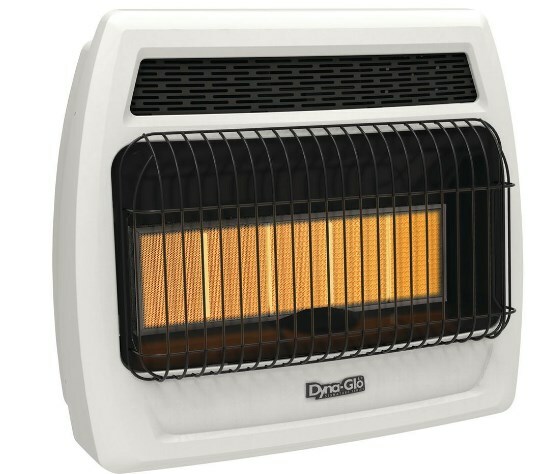
These vent-free, blue flame and infrared, Dyna-Glo natural gas and propane garage heaters are ideal for emergency and supplemental indoor heating. They are sold only as a natural gas heater or a propane heater. Conversion from one fuel to the other is not permitted.
Dyna-Glo blue flame gas heater models are available in: Small (10,000 BTU) that heats 150 - 300 SF areas; Medium (20,000 BTU) that heats 300 - 700 SF areas; Large (30,000 BTU) that heats 450 - 1,000 SF areas.
Dyna-Glo infrared gas heater models burn with 99.9% efficiency. They are available in: Small (12,000 BTU) that heats 150 - 300 SF areas; Medium (18,000 BTU) that heats 300 - 700 SF areas; Large (30,000 BTU) that heats 450 - 1,000 SF areas.
All Dyna-Glo blue flame and infrared natural gas and propane garage heaters may be permanently mounted (mounting brackets and hardware are included). They also feature single-press, battery-assisted ignitions, an auto-temp control thermostats, low-oxygen / carbon monoxide ODS (Oxygen Depletion Sensor) shutoffs, safety grilles and heat reflectors. Accessories are available to upgrade your Dyna-Glo gas heater.
Pros:
| Cons:
|
BOSCH: Check the current price
10 Best Gas Garage Heaters Comparison Table
 Hot Dawg 30,000 BTU Natural Gas Garage Ceiling Heater
Hot Dawg 30,000 BTU Natural Gas Garage Ceiling Heater  30,000 Vent Free Blue Flame Natural Gas Garage Space Heater
30,000 Vent Free Blue Flame Natural Gas Garage Space Heater  Monterey Top-Vent Wall Heater 25,000 BTUH, 70% AFUE, Natural Gas
Monterey Top-Vent Wall Heater 25,000 BTUH, 70% AFUE, Natural Gas  30,000 BTU Vent Free Infrared Natural Gas Thermostatic Wall Heater
30,000 BTU Vent Free Infrared Natural Gas Thermostatic Wall Heater 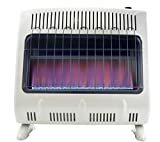 Mr. Heater 30,000 BTU Vent Free Blue Flame Natural Gas Heater MHVFB30NGT
Mr. Heater 30,000 BTU Vent Free Blue Flame Natural Gas Heater MHVFB30NGT 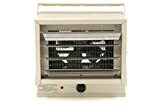 Fahrenheat FUH Electric Heater for Garage, Factory, Basement, Warehouse, and Outdoor Use, Beige
Fahrenheat FUH Electric Heater for Garage, Factory, Basement, Warehouse, and Outdoor Use, Beige 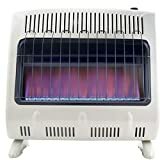 Mr. Heater 30K BTU NG Vent Free Blue Flame Heater with Built In Blower (Natural Gas)
Mr. Heater 30K BTU NG Vent Free Blue Flame Heater with Built In Blower (Natural Gas)  Mr. Heater F272800 40,000 BTU Natural Gas Garage Heater # MH40NG, Multi
Mr. Heater F272800 40,000 BTU Natural Gas Garage Heater # MH40NG, Multi 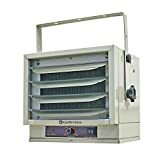 Comfort Zone CZ220 Fan-Forced Ceiling Mount Heater with Dual Knob Controls
Comfort Zone CZ220 Fan-Forced Ceiling Mount Heater with Dual Knob Controls 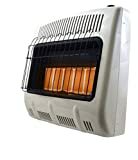 Mr. Heater Corporation F299831 Vent-Free 30,000 BTU Radiant Natural Gas Heater, Multi
Mr. Heater Corporation F299831 Vent-Free 30,000 BTU Radiant Natural Gas Heater, Multi 